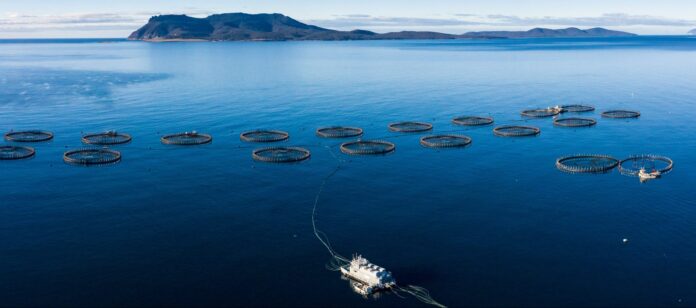Australia plans to increase exports of farmed Atlantic salmon to Asia and the United States as part of the overall plan to boost seafood exports by more than 40 percent to US$1.3 billion (Aus$2 billion) by 2030, but there are weak spots that need to be addressed to achieve this.
The country produces only 2 percent of global harvest of farmed Atlantic salmon. About 70 percent of its production, or approximately US$412 million, is consumed locally.
In 2020/2021, it exported 26,689 MT of farmed Atlantic salmon valued at US$168 million. This is about 20 percent of Australia’s seafood exports in value, ranking farmed salmon second to rock lobster.
“The Australian seafood industry was the first and worst hit when the COVID-19 pandemic struck. Our seafood exports stopped virtually overnight, and the impacts were confounded by growing international trade tensions. We needed to pivot, and we needed to pivot fast,” said Seafood Industry Australia in its first-ever strategic plan focused on exports.
Priority markets
The industry group has identified China, Japan and Vietnam as top priority, describing them as “Tier-1” markets because they are accessible, there’s high demand or high-growth potential, and there’s less competition.
“China is our best export market. We have no issues getting there. Exports have already rebounded to 2018/2019 levels, and in other markets exports are at their highest levels including the US, Vietnam, Thailand, Japan, Indonesia and Singapore,” the group said.
The United States is a Trier-2 market along with Indonesia. While also accessible and there’s high demand or there’s high-growth potential, there’s more competition in these markets, it noted.
Europe is a Tier-3 market because it is less accessible, but it is “worth monitoring,” it said.
Weak spots
There are, however, some weak spots that need to be addressed before the seafood industry could realize its growth targets.
“One of our top challenges would be around freight issues – especially air – potentially in the long term. Currently there are large barriers with freight and about 70 percent of our product is usually transported by air freight. We are hoping for that to change once everything goes back to normal,” the group said.
The industry wants to improve communication with the government on critical issues for the salmon sector. “Geopolitical interference is a key risk. We would like the Australian Government to consider the effects of its actions on businesses before acting, as seen with both China and EU.”
Exporters also feel that resources to help them access new markets are inadequate, especially around the “changing market conditions” in China, the group said.











